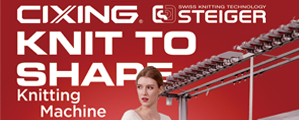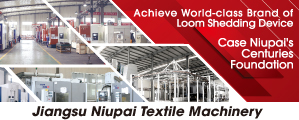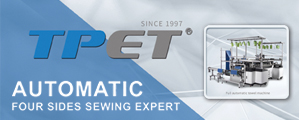For Manufacturers, WTO means We Take Orders
Apr 11, 2012 | by
WTO = We Take Orders
China will mark its 10th full year anniversary as the formal member in World Trade Organization (WTO) on Dec. 11th, 2012. The first anniversary celebration took place in Dec. 2002 when China finished the year with a record –high achievement by its foreign trade machine, speeding up the country’s progress significantly in terms of the import & export totality that chalked up to 610 billion dollars to range China in the Top Five of the world foreign trade, while its FDI outreached $50 billion at an unprecedented level. WTO reshaped the country’s economic growth model, mounting pressure on the outmoded structure that need be reformed in executive, legislative and judicial efforts to take a turn for the better.
10 years later, things are no longer what they used to be. Gorgeous changes have taken place nearly in all aspects of economic sector and in all walks of life where WTO has been playing an irreplaceable role. The upshot is that China’s international trade volume (import & export) rocketed to 3642.06 billion dollars in 2011 to be the world largest, six times as much as was recorded at the year-ending of 2002. Foreign direct investment came up to be 116 billion dollars last year, up by 9.72% as opposed to the year before.
While the country is prepared to acclaim its 10th birthday party for WTO membership at the end of 2012, manufacturers (those export-oriented companies) are also busy with their own WTO preparations. They understand very well that WTO is the world top notch inter-governmental body for global trade issues; nonetheless, they have a good reason to go all out for what they believe is a real sense of WTO, glibly billed as “We Take Orders” which is also abbreviated in acronym as WTO.
This new explanation speaks volumes, for China’s accession to the World Trade Organization has indeed provided trade convenience to its world largest manufacturing industry that takes business orders placed by international clients in an increasing number, and the textile industry has benefited from this trend.
Orders Rise or fall
The barometer of economic performance in textile industry is readable not only by the macro policy that government has leveraged through financial, monetary and industrial instruments, but also by the business growth at company’s level. The number of orders in rise or fall is a primary concern. In early February, China National Textile and Apparel Council, the nation’s largest textile and apparel body, organized an in-situ survey to visit textile and clothing companies across the country, a routine endeavor to understand what is going on now and what will be in store for the coming days that run up to the end of the year. Eight groups are dispatched into the most important textile provinces such as Jiangsu, Zhejiang, Shandong, Fujian, Guangdong, Anhui, Henan. The first five provinces account for over 80 percent of textile and clothing production in the country while the latter two representing an emerging textile power that provides favorable policy incentives and other cost advantages for relocation programs from those cost-rising eastern areas.
(Wang Tiankai (in the middle), President of CNTAC, and Chen Dapeng (left), Executive Vice President of China National Garment Association, are on a study tour, talking with mill manager in Guangdong Province.)
So, what is the situation now with the number of orders? Pretty good, or as good as before or the textile manufacturers, big or small, in eastern area or in the hinterland, public companies or private ones, are in a pickle? Or they are all iridescent after business thunderstorms? One visit can never suffice to get a complete tableau of over 50,000 companies in textile industry, but it is helpful in getting a glimpse of the business rhythm by holding on-site seminars, hearings, discussions, handing over questionnaires, and talking with operators, workshop superintendents and CEOs. The feedback is collected, sorted out, classified into an analytical format for understanding what is going on in the grass-roots companies. Let me choose one of the most-asked questions to see how the business goes in different places by different industrial sectors. The number of business orders, rising or falling, is the one in question.
The Number of Orders Placed by Clients now v.s. the Same Period Last Year
Increased Unchanged Decreased
----------------------------------------------------------------------------------------------------------------------
Total 55.7% 22.7% 21.5%
----------------------------------------------------------------------------------------------------------------------
Companies by Size
-Large 52.8% 22.2% 25.0%
-Middle 58.3% 22.7% 19.0%
-Small 54.5% 24.1% 21.4%
Companies by ownership
-state-holding 47.5% 34.4% 18.0%
-collectively-owned 62.5% 8.3% 29.2%
-private 56.2% 21.7% 22.0%
-HK,Macau & Taiwan-owned 72.4% 13.8% 13.8%
- foreigners-owned 42.1% 36.8% 21.1%
-others 54.2% 25% 20.8%
Companies by region
-Eastern 56.2% 22.8% 21.0%
-Midland 59.2% 18.4% 22.4%
-Great West 26.7% 40.0% 33.3%
Companies by Industrial Sector
-cotton textile 39.3% 24.6% 36.1%
-dyeing,printing & finishing 66.7% 12.5% 20.8%
-wool textile 55.0% 25.0% 20.0%
-bast fiber textile(linen,ramie) 52.2% 30.4% 17.4%
-silk textile 75.0% 0.0% 25.0%
-filament weaving(synthetic) 28.6% 42.9% 28.6%
-hometextile 59.1% 21.4% 19.5%
-tech. textile 74.2% 19.4% 6.5%
-apparel,shoes & cap 71.0% 16.1% 12.9%
-chemical fiber 45.2% 30.6% 24.2%
-knitting(fabric & clothing) 44.4% 14.8% 40.7%
-textile machinery 50.0% 40.0% 10.0%
Source: [[Questionnaire Statistical Report]], an annual pinpointed study of entrepreneurs surveyed
The table is given according to the questionnaire answer sheets from local manufacturers being surveyed in a wide span of regions, with as much an extent of representation as possible, in terms of provinces, geography, company ownership and their pertaining industrial sector. If we see the number of business orders by the industrial sector, cotton textile (spinning & weaving) industry comes out far short of orders with only 39.3% growth in a striking contrast to the other fast-growing sectors, signalling a shrivelling demand for cotton yarn & grey fabric in the downstream consumers like apparel, knitting and home-textile industry as a consequence of up-spiralling cotton price. To deal with it, many downstream manufacturers have shunted their long-term addiction to cotton to a new track for other natural fibers or man-made fiber products to reduce cost, keeping their clients in an enduring attraction.
Orders Drop for Cotton Knits
Statistics from China Knitting Industry show that knit products export has seen some changes in raw material structure with cotton knit apparel being debilitated in market demand. During 2008-2011, the export share of cotton knit apparel was contracted in volume and reduced to 49.96% last year as against its 60%- odd cakeshare in its previous years. With cotton being so expensive, the unit price of the cotton apparel export is also on the significant rise by 24.32%, much higher than the averaged export price for the knit apparel export as a whole in 2011.
|
Item |
Volume
(100 mln.piece) |
change(%) |
Value
($ 100 mln) |
change(%) |
Unit Price
(USD) |
change(%) |
|
Knit Apparel |
207.61 |
-0.43 |
690.32 |
20.33 |
3.33 |
21.09 |
|
Cotton Knit |
103.72 |
-5.54 |
334.26 |
17.4 |
3.22 |
24.32 |
|
Synthetic Knit |
85.50 |
1.99 |
282.31 |
24.21 |
3.3 |
21.77 |
|
Wool Knit |
1.29 |
4.85 |
18.53 |
20.7 |
14.35 |
15.08 |
(Zhang Yankai (left), V. President of CNTAC, Yang Shibin (second on the left), President of China Knitting Industry Association, and Xie Ming, President of Jiangsu Provincial Textile Industry Association, are on a factory tour in Jiangsu Province.)
U.S. Orders, a Freefall in Cotton Apparel Import
Cotton textile proves to a real problem costwise, figure speaks for itself. In cotton products import, US market took in 44.702 billion dollars worth of cotton apparel from the world, a poor rise of 3.17% in 2011 over 2010, while the import of the same category from China dropped by 3.26%. In volume terms, U.S. reduced its import from the world by 11.8% while from China, -17.69% in this regard.
U.S. COTTON APPAREL PRODUCTS IMPORT (Cat.31) in Volume
Data in Million SME (Square Meter Equivalent)
Country 2009 2010 12/2010 12/2011 % Change
---------------------------------------------------------------
WORLD 12608.782 14340.152 14340.152 12647.644 -11.80
CHINA P 4037.623 4827.534 4827.534 3973.312 -17.69
BNGLDSH 1065.523 1209.223 1209.223 1115.874 -7.72
VIETNAM 931.420 1102.174 1102.174 1039.081 -5.72
HONDURA 755.513 912.341 912.341 811.741 -11.03
INDIA 773.984 828.700 828.700 729.506 -11.97
INDNSIA 634.686 728.893 728.893 701.173 -3.80
SALVADR 446.868 593.034 593.034 551.342 -7.03
PAKISTN 587.565 641.939 641.939 549.927 -14.33
THAILND 276.316 325.765 325.765 232.290 -28.69
EGYPT 144.523 147.810 147.810 127.787 -13.55
C RICA 82.862 66.629 66.629 53.539 -19.65
JORDAN 70.249 68.727 68.727 49.424 -28.09
LESOTHO 50.241 46.909 46.909 37.478 -20.11
Note: Just choose some countries as a showcase of volume drop for cotton apparel import last year.
U.S. COTTON APPAREL PRODUCTS IMPORT (Cat.31)
Data in Million SME (Square Meter Equivalent)
Country 2009 2010 12/2010 12/2011 % Change
---------------------------------------------------------------
WORLD 12608.782 14340.152 14340.152 12647.644 -11.80
WTO 12583.435 14309.336 14309.336 12623.936 -11.78
ASEAN 2612.698 3029.749 3029.749 2787.876 -7.98
CBI 2028.461 2332.590 2332.590 2190.035 -6.11
CAFTA 1827.586 2134.323 2134.323 1980.821 -7.19
SUB-SAH 170.122 144.272 144.272 129.103 -10.51
OECD 112.504 110.457 110.457 95.530 -13.51
ANDEAN 79.204 91.704 91.704 76.026 -17.10
Note: Just choose some international economic and trade bodies as a showcase of volume drop for cotton apparel import last year.
Cotton Price, an invisible hand for the slimmed orders
China is the world largest cotton textile producer with spinning capacity for over 120 million spindles and a weaving capacity of 1.26 million sets of looms for an annual production of 80 billion meters of woven fabrics to support China’s dyeing & printing operation for 54 billion meters of dyed fabric a year and to keep a abundant feedstuff for its 16.4 billion pieces of knit apparel production and 12.1 billion pieces of woven clothing every year, plus more cotton fabric going to hometextiles for interior applications. If cotton textile industry can hardly ward off price hike intrusion, the downstream sector will inevitably catch the contagion to be very expensively swollen, which will sever any optimistic vision of more orders to be placed by clients, in spite of the fact that they have been on good terms with you for many years. In Sept.2010, cotton price cranked up from 8000 yuan/ton all the way up to breakthrough 30,000 yuan/ton, and peaked at 34,000/ton, over 400% up against the Sept. level. The above tables are nothing but an evidence that cotton apparels ran into an avalanche in U.S. market most likely for price reason.
To the dismay of many spinners who have bought in a lot of cotton to house it in inventory for fear of its price galloping unleashedly and relentlessly to a devastating height, the price stumbled and had a freefall from 34,000 yuan/ton in March of 2011 to 19,196 yuan/ton in Nov. last year, which plunged many cotton textile mills into a haunted nightmare and a fatal quagmire, so that the managers found themselves on the horns of a dilemma: to continue to run the mill with the in-inventory cotton they had bought at peak price is to die, or to buy the new cotton instead of using the cotton in factory inventory is also to die, and to close the factory means all are to die. Where is the way out?
There is a Way
Cotton is a long-time persistent headache not only for spinners and weavers, but also for cotton yarn & cotton fabric clients, namely, the knitting or woven apparel manufacturers who have also been troubled by this chronic pain. Success is always tilted in favor of those who have prepared for the worst while hoping for the best. Xueda Corp., a vertically-integrated knitting apparel company in Qingdao city, east of Shandong province, with an annual production of 60,000 tons of knit fabric in 2000 varieties, coupled with 50 million pieces of knit apparels, has long realized the hazardous cotton-only product line that lies low at the time when cotton products were in the hustle and bustle. The company has reshaped its focus on cotton products to take a new road for using a lot of innovative and functional fibers, mostly synthetic, which are knitted into the light-weight, warm-keeping, or cool-retaining, flame-retardant and other function-purposed fabrics for its new lines of apparels. “We have largely reduced cotton share in our product lines which are more oriented towards synthetic but functional fabrics in our finished products. The pure cotton products account only for 15% in our total portfolios, and we have managed to weather through the storms of cotton price that went mad in the past few years. Last year, we had the best achievement in the number of orders, sales and profits.”, so said Mr. Lu, General Manager of Xueda Group Corp. in Qingdao.
WTO means a lot
WTO, an acronym for “We Take Orders”, is the prior consideration to outshine the other factors pertaining to companies’ economic performance, like lack of operators, difficulty in getting bank loans, operation rate of the existing machines, capricious price in raw materials, wages pressure etc..
We think a reliable and stable cotton price will pump up the lackluster confidence in manufacturers struggling upstream and downstream, and will revitalize the clients’ enthusiam with cotton products, which still represent a large share against the recent sharp fall in U.S. market. Manufacturers and exporters need more orders to take in running their business and keeping jobs for the most densely-populated industry in China. Celebrating China’s entry to the World Trade Organization (WTO) for its tenth year is marvelously great when we look back over our shoulders to see the progressive steps that leads the country up to the peak in international trade, but it is equally marvelous to awaken the fuzzy memory of the manufacturers’ own WTO – “We Take Orders” is a headache to alleviate and cure right now, and a great thing to do in the future, and a wary celebration at the end of 2012.








